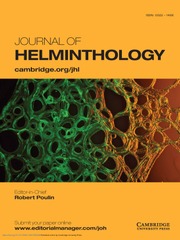No CrossRef data available.
Article contents
Comparative mitogenomic analysis of three Bursaphelenchus species (Nematoda: Aphelenchoididae)
Published online by Cambridge University Press: 02 September 2025
Abstract
The genus Bursaphelenchus has attracted significant attention due to its economically devastating and quarantined species – notably the pine wood nematode B. xylophilus and B. cocophilus. Despite their ecological and agricultural importance, genomic data for this genus remain scarce. In this study, we sequenced and assembled the complete mitochondrial genomes of three Bursaphelenchus species (B. chengi, B. parantoniae, and B. sinensis) using high-throughput sequencing. The circular mitogenomes exhibited size variation, with B. chengi (17,670 bp), B. parantoniae (15,021 bp), and B. sinensis (18,386 bp) each containing the typical nematode mitochondrial gene complement: 12 protein-coding genes (PCGs), 2 ribosomal RNA (rRNA) genes, and 22 transfer RNA (tRNA) genes. Phylogenetic analysis based on the concatenated amino acid sequences of the 12 PCGs revealed that these species form a sister clade to B. xylophilus and B. mucronatus. Comparative mitogenomic analysis demonstrated a conserved gene arrangement shared among Bursaphelenchus, Aphelenchoides, Caenorhabditis, Cruznema tripartitum, and Pristionchus pacificus, suggesting strong evolutionary conservatism across the families Aphelenchoididae, Neodiplogasteridae, and Rhabditidae. Our study enriched the mitochondrial genomic resources for Bursaphelenchus and advanced resolution of their intrageneric phylogenetic relationships.
Information
- Type
- Review Article
- Information
- Copyright
- © The Author(s), 2025. Published by Cambridge University Press

